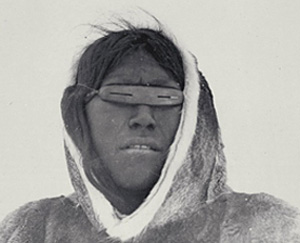Threads of survival
April 25, 2011
They were motivated one and all by a powerful urge to discover unexplored territories and venture beyond the limits of knowledge. In their quest to expand the horizons of geographic, biological and cultural understanding, they were ready to confront the most hostile of climates: the biting cold of Canada’s Far North. But were the men who undertook the Canadian Arctic Expedition of 1913–1918 equipped to handle the inhospitable climate? Let’s take a look into the packs of those who set out on this perilous mission.
The brave and the foolhardy
Two teams divided up the territory. The Northern Party, led by explorer Vilhjalmur Stefansson, set out to claim Canada’s sovereignty over new lands that the team aimed to discover in the western High Arctic. The Southern Party, under the direction of zoologist Dr Rudolph Anderson, would record the life of the Inuit and study plants, animals and geological resources as they gathered artifacts for Canada’s National Museum.
Despite the major setbacks that befell the expedition during its first year – several members of the Northern Party died when the flagship was crushed in the ice – the Expedition would leave an important legacy for Canada. The Northern Party would re-draw the map of the Canadian North, discovering four major islands that would be added to our territory and correcting significant cartographic errors made by previous explorers.
For its part, the Southern Party would draw detailed maps of the Arctic coastline and return to Ottawa with thousands of plant, animal, mineral and fossil specimens, thousands of artifacts from the Inuit, nearly 4 000 photographs and 2 740 metres of film footage. This considerable bounty contributed significantly to our understanding of the unique culture of the people who inhabit the North.
Of course, none of these discoveries would ever have come to pass without the invaluable help of the local people who held the secrets of survival in the harsh northern climate. Guides, hunters, seamstresses and other Inuit collaborators enabled the explorers to match Southern technology with Northern know-how.
| www.flickr.com | ||
Seeing is believing
One of the major problems to confront the members of the Canadian Arctic Expedition was snow blindness. The reflection of the sun’s rays on the surface of the snow can cause a very painful form of temporary blindness. It soon became apparent that the various industrial tinted glass goggles the team had ordered from southern suppliers were much less effective than Inuit goggles. Made of wood or ivory, these goggles completely covered the eye, save for a thin horizontal slit that allowed the wearer to see.
This clever design, which can be dated back about 800 years in Canadian Inuit culture, would prove its worth as the Expedition members adapted to the extreme conditions.
The explorers also soon discovered the value of the warm clothing made by the region’s Inuit. Caribou parkas provided protection from the wind and the cold. The Inuit seamstresses that accompanied the teams would craft and repair these essential garments.
The sturdy Inuit footwear turned out to be most indispensable. Sealskin shoes are worn by the Inuit at night while their skin boots are set out to dry. In periods of intense cold, these can be fitted over the boots for extra warmth.
Several of these boots and goggles were sent to Ottawa when the expedition ended – a testament to the vital intercultural exchanges that took place between North and South. These items are now part of the Canadian Museum of Civilization’s collection and a number of them will be on display as part of the exposition Expedition: Arctic, from April 21, 2011 to April 15, 2012.